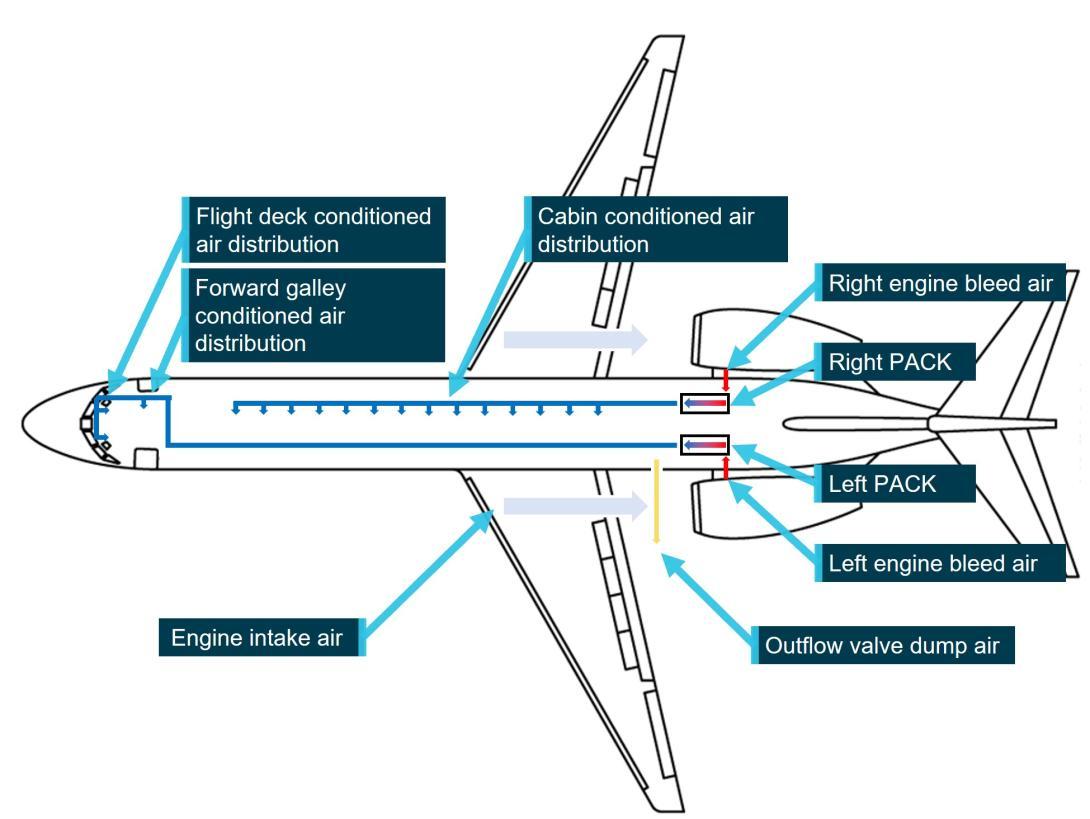
A pilot incapacitation incident on a Boeing 717 while the aircraft was on approach to land at Hobart last June reminds pilots to be alert to the potential hazards of odours and fumes and to not hesitate to use supplemental oxygen.
The serious incident occurred on 6 June 2023 when the QantasLink aircraft, operated by National Jet Systems, was operating a scheduled passenger service from Sydney with 5 crew and 54 passengers on board.
About 10 NM from Hobart, the flight crew noticed a chlorine odour emitting from the flight deck air-conditioning vents for about 10 seconds.
Shortly after, the captain experienced hypoxia-like symptoms, and assessed themselves unfit to continue as pilot flying, and handed over duties to the first officer.
The captain later described the symptoms as fogginess of thought, confusion, deteriorating situational awareness, weakness and tingling in the arms and legs, and narrowing of vision.
Then prior to touch down, the first officer noticed their reaction to an aircraft deviation was slowed, and they started to feel ‘hazy’.
Due to the impending landing, and perceived difficulties of donning the mask, supplemental oxygen was considered but not used, the report from the ATSB investigation into the incident details. A go-around was also considered but rejected following an assessment that continuing the landing was the safest course of action.
After landing and shutting down the aircraft, both pilots reported persistent headaches, and they were assessed by a company doctor via teleconference, during which the doctor observed that the captain’s speech was noticeably affected, consistent with impairment. The captain then attended hospital for further testing.
“This incident is a reminder to pilots to be alert to the potential hazard posed by odours and fumes, and to not hesitate to use supplemental oxygen,” ATSB Chief Commissioner Angus Mitchell said.
“The use of oxygen is a proven mitigating action in the case of environmental hazards and its rapid use ensures flight crews’ physical and mental capacity is maintained.”
The ATSB investigation also identified that while the cabin air quality events procedure had been conducted earlier in the flight, after cabin crew reported a chlorine odour and symptoms during the climb out of Sydney, this procedure did not consider the possible application of the smoke/fumes procedure, or the incapacitation procedure.
“This increased the risk of flight crew being adversely affected by such an event during a critical stage of flight,” Mr Mitchell noted.
Shortly after the incident, National Jet Systems issued a notice reminding flight crews to consider supplemental oxygen use, and the declaration of a PAN in response to a cabin air quality event.
Then, in March 2024, the operator advised the ATSB of a number of additional safety actions, including training updates, a review of checklists, and the incorporation of learnings into the newly-introduced A220 aircraft’s smoke/fumes, hypoxia and incapacitation procedures.
“Airborne contaminants may result in the rapid onset of incapacitation, which although possibly subtle, can significantly affect the safety of flight,” Mr Mitchell said.
“Physical or cognitive incapacitation can occur for many reasons and may be difficult for others, or even the sufferer, to detect and respond to.
“As such, pilots should not hesitate to use supplemental oxygen.”
Read the report: Flight crew incapacitation involving Boeing 717-200, VH-NXM, on approach to Hobart Airport, Tasmania on 6 June 2023


